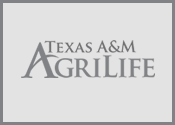
Morgan McCulloch, Reagan Noland, and Thomas Isakeit Reniform nematodes, Rotylynchulus reniformis, have become an issue for many cotton producers across Texas. The female microscopic roundworms use specialized stylets (mouthparts) to pierce and embed their heads into roots to syphon nutrients from the plant. This causes above ground stunting, increases the plant’s susceptibility to other stressors, and reduces boll load. Reniform nematodes can remain dormant in the soil for up to two years and have a wide host range. This makes them difficult to manage and requires long-term management… Read More →